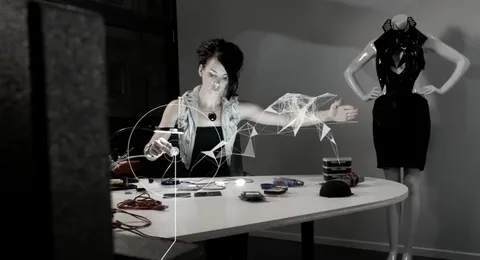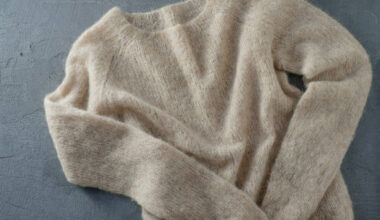The fashion industry has always been a dynamic one, changing all the time to meet the needs of consumers, technological breakthroughs, and cultural changes. But in recent years, a new frontier has emerged that is reshaping the way we think about clothing, accessories, and personal expression: Tech Fashion. This combination of fashion and technology is a revolution that is changing the direction of the industry, not only a passing fad.
As someone deeply embedded in the fashion world, I’ve witnessed firsthand how technology is transforming every aspect of the industry, from design and production to marketing and retail. I’ll discuss the emergence of digital fashion, its effects on the market, and why it’s revolutionary for consumers, designers, and companies alike in this piece.
What is Tech Fashion?
Tech fashion, also known as wearable technology or smart fashion, refers to the integration of advanced technologies into clothing and accessories. This can range from wearable technology like fitness monitors and augmented reality (AR) glasses to smart textiles and 3D-printed clothing. In order to create goods that are not just fashionable but also clever and interactive, the objective is to improve functionality, aesthetics, and user experience.
For example, imagine a jacket that adjusts its temperature based on the weather, a handbag that charges your phone wirelessly, or a pair of sneakers that tracks your steps and posture. These are no longer concepts from science fiction—they’re real products that are already hitting the market.
The Driving Forces Behind Tech Fashion
Tech fashion is growing as a result of several important factors:
- Consumer Demand for Innovation
Today’s consumers are tech-savvy and value-driven. They want things that are sustainable, convenient, and functional in addition to being aesthetically pleasing. By fusing innovative technology with fashionable design, tech fashion satisfies these needs.
- Advancements in Technology
Breakthroughs in areas like artificial intelligence (AI), the Internet of Things (IoT), and nanotechnology have made it possible to embed sophisticated tech into fabrics and accessories. Designers are pushing the limits of what fashion is capable of thanks to these advancements.
- Sustainability Concerns
The fashion industry is one of the largest polluters in the world, and consumers are increasingly demanding eco-friendly alternatives. Tech fashion provides solutions such as waste-reducing smart textiles, energy-efficient production techniques, and clothing with adaptive elements that extend its lifespan.
- The Rise of the Metaverse
Tech fashion is becoming increasingly important in the metaverse as virtual worlds and digital identities gain prominence. Digital clothing, virtual try-ons, and NFTs (non-fungible tokens) are becoming integral to how we express ourselves online.
Key Innovations in Tech Fashion
Here are a few of the most fascinating advancements in tech fashion:
- Smart Fabrics
Textiles that have sensors, microchips, or other technology integrated into them so they can communicate with the wearer or their surroundings are known as smart fabrics. For example, conductive textiles can track vital indications like body temperature and heart rate, whereas thermochromic materials change color in response to temperature.
- Wearable Devices
A mainstay of tech fashion is wearable technology. From smartwatches and fitness trackers to AR glasses and hearing aids, these devices are seamlessly blending into our wardrobes. Leading companies in the market include Apple, Google, and Samsung, but luxury wearables from designer labels like Gucci and Louis Vuitton are also making an appearance.
- 3D Printing
The design and production of clothing is being completely transformed by 3D printing. Designers may now produce complex, bespoke pieces with little waste. On-demand manufacturing is also made possible by this technology, which lowers inventory costs and overproduction.
- Augmented Reality (AR) and Virtual Try-Ons
AR is transforming the shopping experience by allowing consumers to virtually try on clothes, accessories, and even makeup before making a purchase. AR is being used by companies like Sephora and Warby Parker to increase consumer engagement and lower return rates.
- Sustainable Tech Fashion
Tech fashion places a lot of emphasis on sustainability. Brands are able to exceed consumer expectations while minimizing their environmental effect thanks to innovations like solar-powered apparel, biodegradable textiles, and AI-driven supply chain optimization.
The Impact of Tech Fashion on the Industry
Tech fashion is revolutionizing the entire fashion industry, not just what we wear. Here’s how:
- Redefining Design and Production
Designers may now experiment with novel materials, shapes, and functionality thanks to tools and technologies. As a result, items are becoming more inventive and customized.
- Enhancing the Consumer Experience
Shopping is becoming more dynamic and interesting thanks to tech fashion. Customers are having a smooth and delightful experience thanks to AI-powered styling assistants, virtual try-ons, and tailored recommendations.
- Driving Sustainability
By leveraging technology, brands can adopt more sustainable practices, from eco-friendly materials to energy-efficient production methods. Customers are becoming more prepared to spend more for sustainable items, which benefits businesses as well as the environment.
- Creating New Revenue Streams
Tech fashion is opening up new opportunities for monetization, such as digital clothing for the metaverse, subscription-based models for wearable tech, and data-driven insights for targeted marketing.
Challenges and Opportunities
While tech fashion holds immense potential, it’s not without its challenges. Among the challenges brands face are high production costs, technology constraints, and consumer distrust. But these difficulties also offer chances for uniqueness and creativity.
For example, brands that can successfully integrate technology into their products while maintaining a strong focus on design and usability will have a competitive edge. In a same vein, companies that put an emphasis on openness and educating people about the advantages of tech fashion will have an easier time gaining over skeptics.
Tech Fashion’s Future
Tech fashion has a bright future ahead of it, full with opportunities for development and innovation. We can anticipate much more fascinating advancements as technology develops, like:
- AI-Driven Personalization: Apparel and accessories that instantly adjust to your tastes, routines, and requirements.
- Holographic Fashion: Garments that use holograms to change their appearance or display dynamic patterns.
- Biometric Clothing: Apparel that monitors your health and provides actionable insights to improve your well-being.
- Circular Fashion: Tech-enabled systems that promote recycling, upcycling, and sharing of clothing to reduce waste.
Tech fashion is more than just a trend—it’s a transformative force that’s reshaping the fashion industry. Innovation and style are being combined to provide new opportunities for consumers, designers, and brands. Success in the future will depend on our ability to embrace technology while adhering to the fundamental principles of fashion, which are uniqueness, creativity, and self-expression.
For brands looking to stay ahead of the curve, now is the time to invest in tech fashion. The future of fashion is here, and it’s driven by technology, whether it’s through wearable technology, smart textiles, or environmentally friendly technologies.






